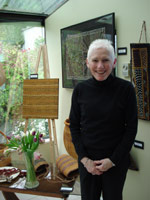I am perplexed by the fact that companies have been laying off older workers for years as part of various downsizing projects. I understand the drive to cut costs. Under normal demographic conditions, laying off older workers would even make some sense from a strictly financial point of view, since they generally command higher salaries than younger workers. The fact is, however, that those same companies are moaning about shortages of qualified people and the difficulties they’re having in
Tag Archives: wisdom
Thanksgiving
A Happy Thanksgiving Day tribute to all our elder friends in Canada!
Thanks for the Elders
You have made my life richer.
And you have made me see the world anew
By bringing your perspective to my life.
Grateful am I for every moment of your time,
Every sharing of your wisdom and experience,
Each intention clarified and held,
But more than these…I am honoured to ‘listen’
To who you are and what you stand for.
Travels
I am officially on holiday. Darlene and I are in Granada seeing what is perhaps one of the two or three top tourist destinations in Europe—The Alhambra. Aside from this site being a unique and spectacular complex of ancient fortifications and Arabic palaces, it also tells the story of how temporal our lives and our civilizations really are. This one had a pretty good run (about 800 years) before it was conquered in 1492, the same year Columbus set foot in the ‘New World’.
Our visit has
Loss
One of the things we need to learn if we haven’t learned it by the time we reach retirement and our ‘golden years’ is how to deal with loss. Aside from the obvious loss of friends and family though death and incapacitating illness, we have a host of other things we can ‘lose’, such as systems of support, material possessions, our physical abilities and perhaps most importantly—possibility. Not everyone experiences loss and certainly not in the same way. But loss, whether real or perceived,
The Poetic Memory IV
By Stu Whitley
Bio
This is the fourth post in a four-part series.
It may be that memory is the Well of Wisdom: this idea is central to Celtic mythology. In Celtic lore, the well is situated at the centre of the Otherworld, the spiritual source, the land of the dead. Where it gushes up, pilgrims drink from it using a skull as a vessel, thereby creating a direct link with the dead. At the well of Llandeilo in Dyfed, Wales, this practice continued into the twentieth century. The skull was said to be that of St. Teilo, the ruins of whose church loomed over the well itself. The voices of the wells, usually feminine, were released in dreams. Keepers of the wells were considered to be oracles, dispensing analyses of past conduct, future guidance and even the whereabouts of lost objects. The image of a well as memory seems apt: if we had the capacity to let down our bucket sufficiently deeply, what universal truths might we find? I think it’s arguable whether we have enough rope on the well’s spool. The intuitive proof of this lies in the toss of the coin accompanied by a wish that, at one time or another, has gripped the imagination of all of us: the wisdom of sacred water. I sit silently beside a dark well so deepthe splash of tokens echoes faintlylike distant, mocking laughtereach arcing coin that tumbles undercarries a wish for, what? serenity?Elsewhere
I wrote of the ‘editorial memory’. By that, I mean the mind’s capacity
to organize thoughts into their essential message, to synopsise, cull,
re-frame or otherwise adjust what we have heard or experienced so that
we can cope with it, or at least participate in the filing of
particular things. This is not always helpful: after all, we may be
contumaciously dismissive of something that turns out to be quite
important.
I
Family
My father and I drove from Arizona to the Northwest last week and we are now enjoying a relaxed week together along with my daughter and her husband. I am grateful for the opportunity to spend whatever time I can with family. I think that, as we get older, our appreciation for our children and parents expands. At the same time, I can also see that I can become ‘stuck’ in a kind of ‘family-get-together-pattern’. Not that this is bad, but it is different than how I might normally spend a
Where have all the dreams gone?
I have been reading an interesting book that is a mix of historical thriller and modern mystery called Labyrinth by Kate Moss. It spans history from the Middle Ages to the present and raises all sorts of ‘what-is-life-all-about’ questions. For me, it opened
Why We Need Mature Friends
This story was submitted by Cindy La Ferle over at Cindy’s Home Office.
Until
I met Sylva B., I rarely socialized with ‘older people’ outside my
family circle. When I wasn’t working, I hung out with friends my own
age.
At least 40 years my senior, Sylva was the
silver-haired personnel manager who interviewed me for my first job in
reference book publishing in Detroit. I was 25 then, and desperate to
get
Listening & Learning
Life happens while we’re having conversations with ourselves and other people.
Listening is the context that makes life intelligible, allows anything to have meaning, and forms the basis for all communication (both written and spoken). It’s a whole lot more than just ‘hearing’ the words that are spoken. It’s about listening with an open mind, listening without already having an answer, listening to the person and noticing what they are not
Changing Patterns and Art

By Shae Hadden
Bio
